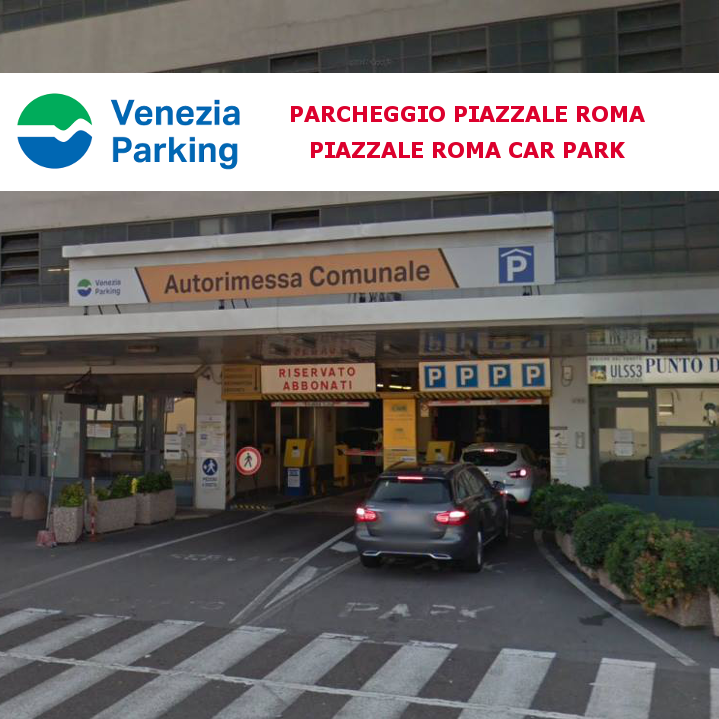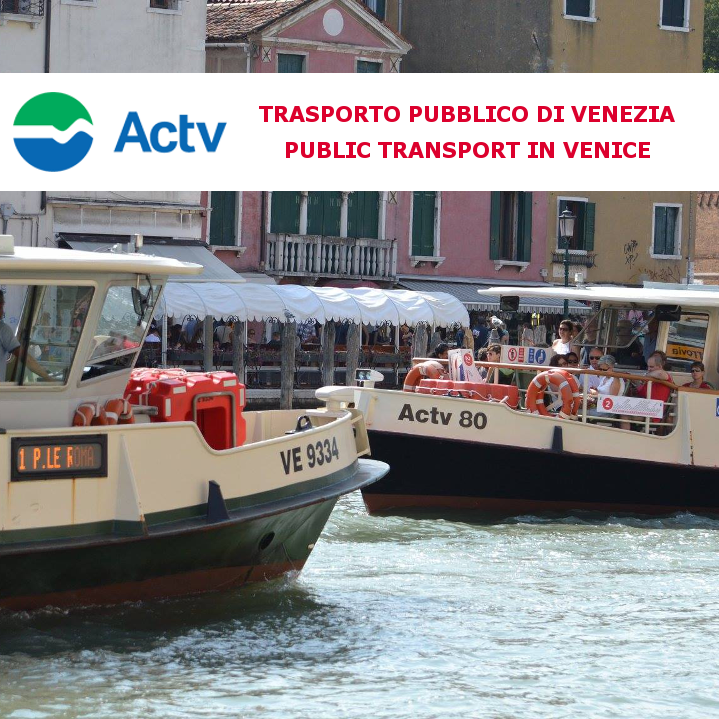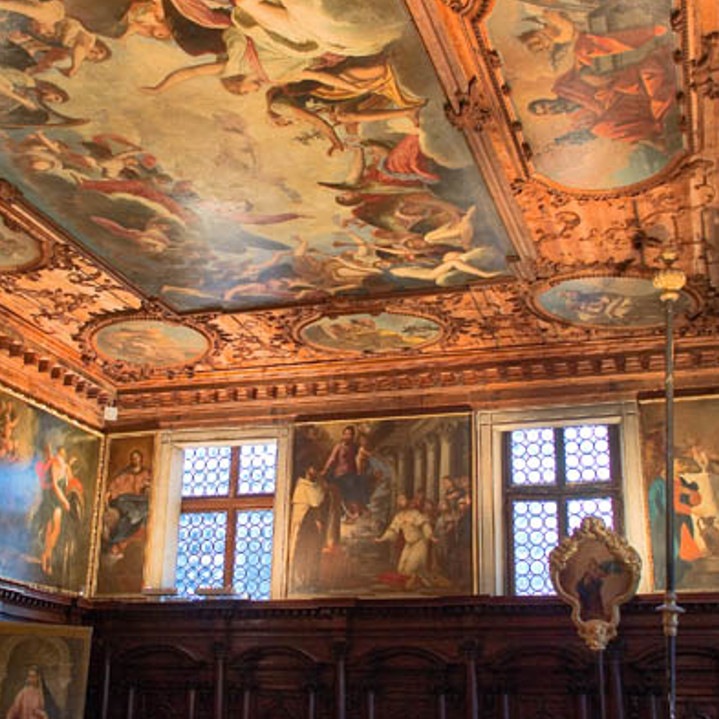You are here
Murano. The island of light
Murano. The island of light
The itinerary takes place entirely on the island of Murano, located in the northern part of the Venetian Lagoon only twenty minutes away by water bus from Venice. The island has been unceasingly famous worldwide for its glass production since the 13th century. In fact, it was in 1291 that the furnaces for glass processing, initially located in Venice, were by Ducal edict, moved to Murano for the well-founded fear that fires - then very frequent in a city with buildings largely constructed with wood - led to its destruction.
Countless shops scattered all over the island displaying artisans lampworking glass are added to the relevant activity of factories where the glass masters individually work to create their masterpieces assisted only by a few helpers.
This itinerary is oriented towards the discovery of a very special and to our days unique activity thanks to the work of two artisans, Marco Toso Borella and Matteo Seguso, who decorate glass with the ancient techniques of the “graffito” (scratching) and engraving, and glass master Lorenzo Ferro, who makes artistic glass.
In the island there are many restaurants, “trattorie" and the "osterie" serving genuine Venetian cuisine, such as appetizers made of various "cicchetti", pasta, "risi e bisi": that is risotto with peas, or even a fish risotto, as well as delicious spaghetti with clams. The spaghetti with squid ink, garlic, oil, cuttlefish, parsley and salt are also very tasty as a second course you can taste the "sarde in saor or liver cooked the Venetian way, or polenta served with the "schie", grey shrimps caught in the Venetian lagoon, all accompanied by a good glass of wine. At Carnival time you can taste the "fritole", dumplings with a cream filling.
The Site “Venice and its Lagoon” has been inscribed on the World Heritage List since 1987 due to its Outstanding Universal Value, therefore it belongs to all of us: it is our common duty to respect it and preserve it so that it may be passed on to future generations.
The cultural heritage of the Site goes beyond the walls of palaces, churches, beyond islands and the lagoon, but is also memory, identity, community, all fundamental elements for the its vitality.
In 2017, the City of Venice launched the #EnjoyRespectVenezia campaign to raise awareness of tourists impact among visitors inviting them to maintain a respectful and polite behavior during their staying, respecting the city and its inhabitants: it is important for example to walk keeping on the right, not to stop and si on the bridges, not to feed the birds, to alway always observe a decent attitude in keeping the place you are visiting.
- Duration: about 3 hours
- Lenght: 1,4 Kilometres on foot
- Mode of travel: ACTV motorboat from/to Venice (Fondamente Nòve) and on foot
- Recommended period: throughout the whole year (except major religious and civic holydays)
- Accessibility: total and for all (it is possible to avoid crossing the footbridge by using the public transportation from “Da Mula” to “Museo” water bus stops with the daily pass)
- Departure: Fondamente Nòve (Cannaregio)
- Arrival: Santi Maria e Donato Basilica (travel back to Venice - Fondamente Nòve by ACTV water bus - lines 4.1/4.2)
- Districts: Cannaregio and Murano island
-
Places worth to be visited:
1) Upon departure from Fondamente Nòve, close to the water bus landing stage, Titian’s workshop-house is worth being seen and, a short distance away, Santa Maria Assunta or Jesuits’ Church whose façade rich with statues (18th cent.) overlooks the Jesuits Square where the “Crociferi” Oratory is also located
2) On the way to Murano, the vaporetto water bus makes a call at San Michele Cemetery Island with its church (15th cent.) and a monumental section with important people’s burials (Igor Stravinskij, Sergej Djagilev, Ezra Pound, Iosif Brodskij, Helenio Herrera, Luigi Nono, Cesco Baseggio)
3) Upon arrival at Murano “Da Mula”, the beautiful gothic façade of Palazzo Da Mula (15th-16th cent.) is decorated with stone tiles. In the inner courtyard, remains of a Byzantine building with mullioned porch can be admired (12th-13th cent.)
4) Within the Mazzega Glass Factory’s premises, besides Maestro Marco Toso Borella’s studio, other prominent Muranese glass masters have their workshops
5) Walking down for 350 metres along the Fondamenta dei Vetrai from Fondamenta Da Mula, passing by San Pietro Martire Church (14th - 16th cent.) rich with significant works of art by Venetian painters (Giovanni Bellini, Bartolomeo Vivarini, Paolo Veronese, Jacopo and Domenico Tintoretto), you pass in front of numerous artistic workshops that propose to visitors the different types of glass processing. The atelier of Adriano Berengo (1989) is of a considerable importance for contemporary art glass works. Visit to Maestro Matteo Seguso’s artistic workshop
6) Back to the Lino Toffolo Bridge (Ponte Longo), crossing the main canal, the opposite bank Riva Longa is disseminated with stores and workshops here and there intermingled by trattorias and by the “Conterie” (Glass beads factory) complex now the Hyatt Centric hotel. The sequence of shops continues beyond Punta Conterie, along the Fondamenta Marco Giustinian where the elegant façade of Palazzo Giustinian (17th cent.) overlooks the canal. Since 1861 it hosts the Glass Museum founded by abbot Zanetti as a demonstration of the variety and constant evolution of the different glass working techniques. Across the canal stands the beautiful Renaissance façade of Palazzo Trevisan (1557)
7) In San Donato square, besides Santa Maria e Donato Basilica (12th cent.), at the foot of the Tower, is the War Memorial, a noteworthy work by the sculptor Napoleone Martinuzzi - Places where to rest: the only square for a rest during the itinerary is the Campo San Donato, in front of Santa Maria e Donato Basilica, with a splendid view of the Church’s apse in Romanesque style
- Public toilet facilities: the Glass Museum offers its visitors the opportunity to use the Toilet service as well as a Baby Pit-stop area (for breastfeeding, diaper change and relaxation)
- Public drinking fountains: N° 134 Fondamenta Longa - N° 135 Campo San Donato
Listen to the audio tour
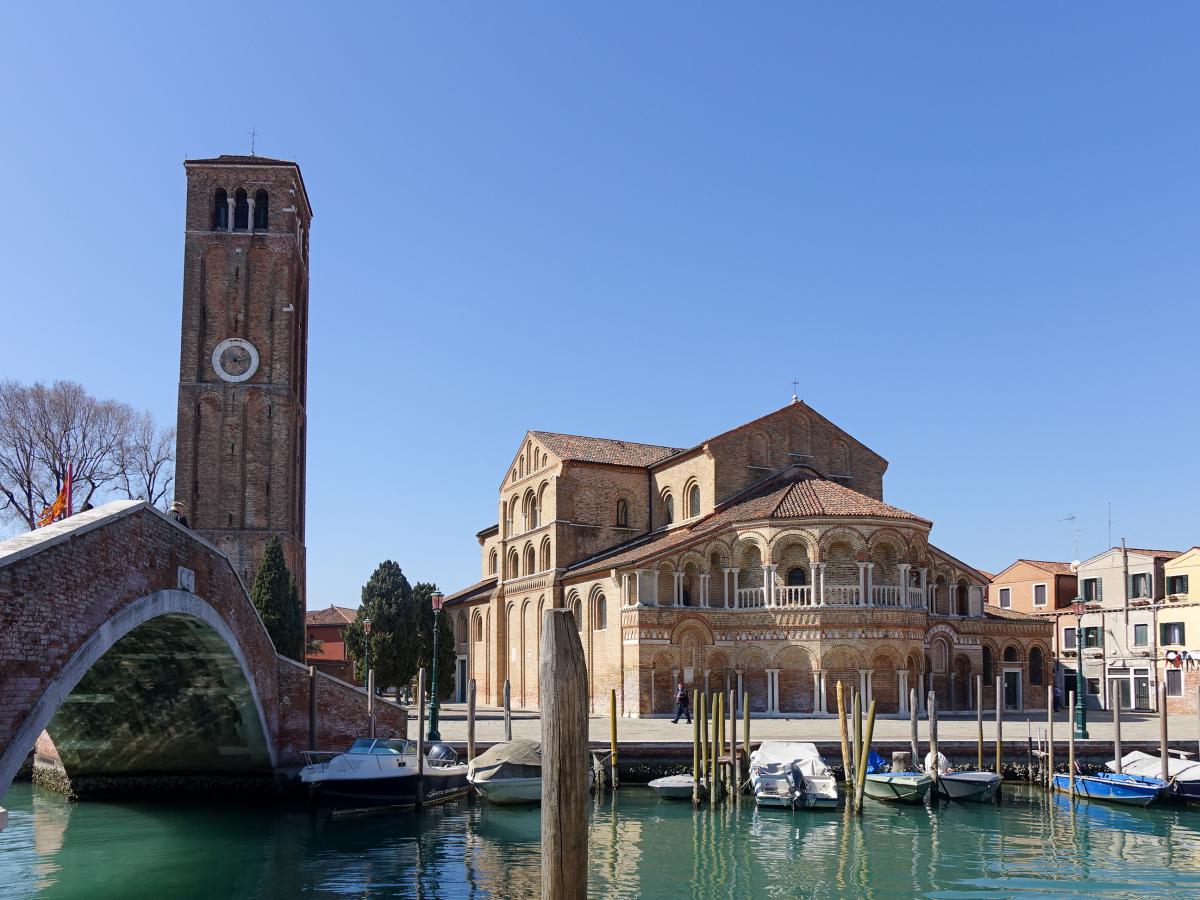
Santi Maria e Donato Basilica
ph. Gabriele Vattolo - Comune di Venezia
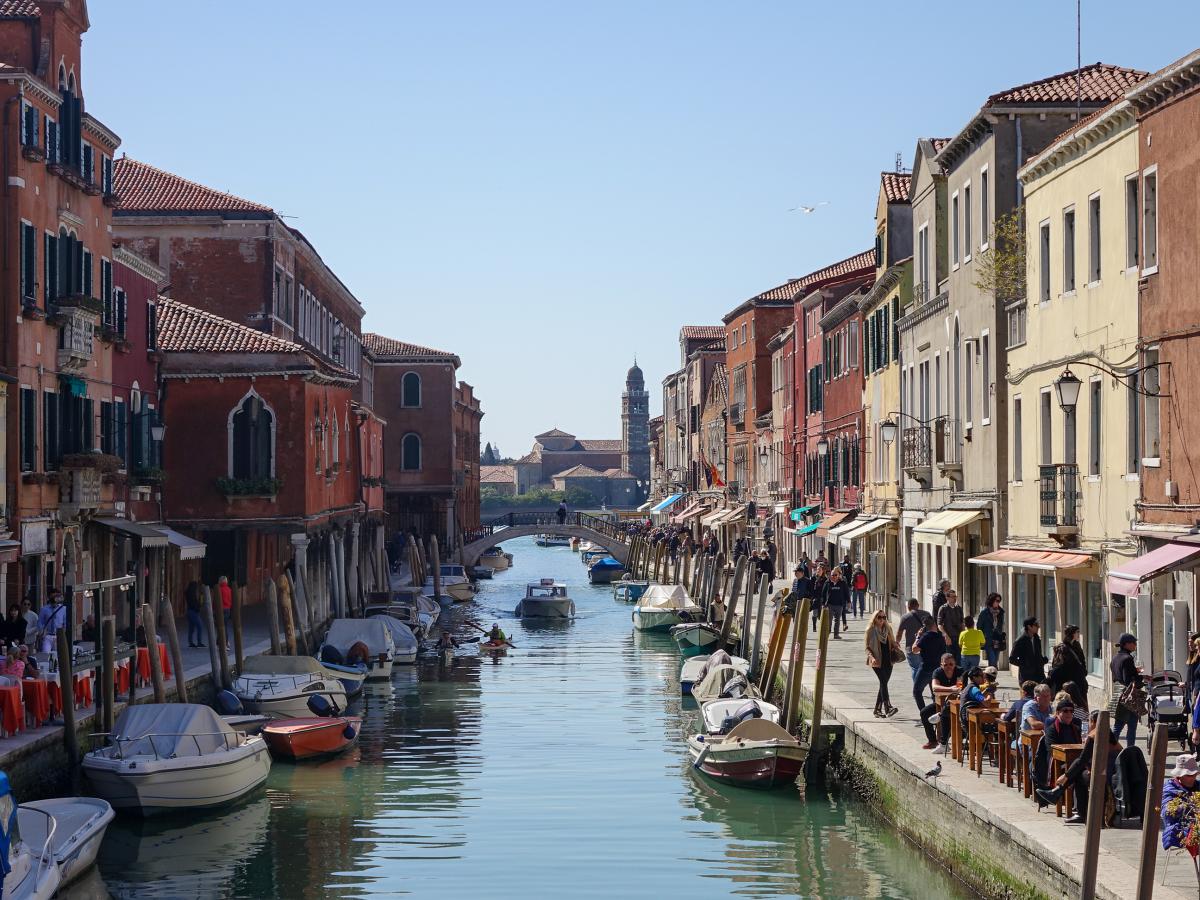
Fondamenta dei Vetrai
ph. Gabriele Vattolo - Comune di Venezia
Stage 1: From Fondamente Nove to the Marco Toso Borella's studio
Although this itinerary entirely takes place on Murano Island within a mile radius, still it is sub-divided in four stages.
On the way to Murano, the vaporetto water bus makes a call at San Michele Cemetery Island with its church (15th cent.) and a monumental section with important people’s burials (Igor Stravinskij, Sergej Djagilev, Ezra Pound, Iosif Brodskij, Helenio Herrera, Luigi Nono, Cesco Baseggio).
Upon arrival at Murano “Da Mula”, the beautiful gothic façade of Palazzo Da Mula (15th-16th cent.) is decorated with stone tiles. In the inner courtyard, remains of a Byzantine building with mullioned porch can be admired (12th-13th cent.).
Some movies were shot in Murano such as: “La prima note” (1959) starring Vittorio De Sica and Claudia Cardinale, “Nero veneziano” (1978), “Don Giovanni” (1979) directed by Joseph Losey, where a scene of glass processing is filmed, and “Solamente nero” (1978) starring Stefania Casini, almost entirely shot on the island.
Visit to Maestro Marco Toso Borella’s studio (45 minutes). Within the Mazzega Glass Factory’s premises, besides Maestro Marco Toso Borella’s studio, other prominent Muranese glass masters have their workshops.
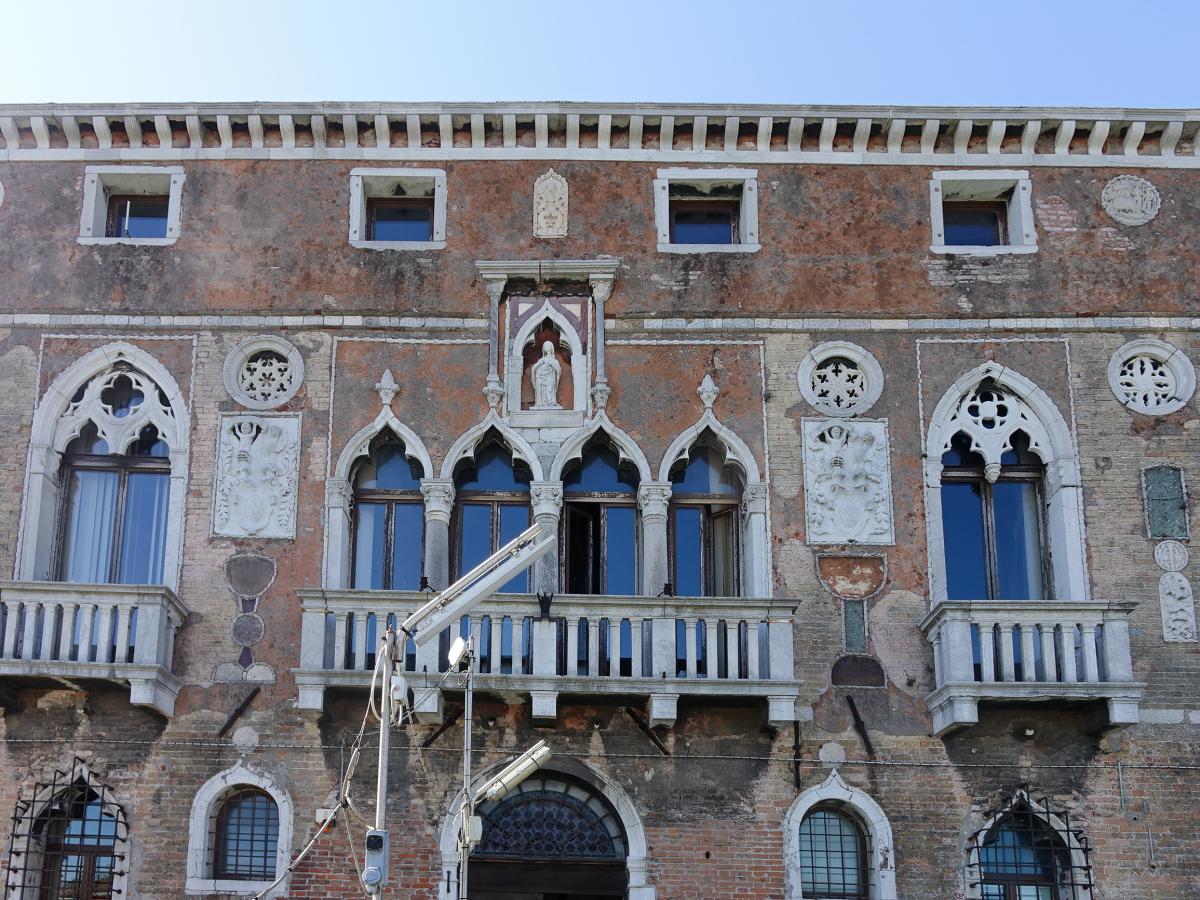
Palazzo Da Mula
ph. Gabriele Vattolo - Comune di Venezia
Stage 2: From Fondamenta da Mula to Matteo Seguso's studio
Walking down for 350 metres along the Fondamenta dei Vetrai from Fondamenta Da Mula, passing by San Pietro Martire Church (14th - 16th cent.) rich with significant works of art by Venetian painters (Giovanni Bellini, Bartolomeo Vivarini, Paolo Veronese, Jacopo and Domenico Tintoretto), you pass in front of numerous artistic workshops that propose to visitors the different types of glass processing.
It would be enough go browsing to realize how vast is the offer by the craftsmen proposing their creations ranging from mosaics to blown glass, from beads to lampworking glass, from the “murrinas” and other glass jewellery to solid glass sculptures, from the faithful replicas of the masterpieces exhibited in the Glass Museum up to the surprising creations designed by some of the most celebrated masters of contemporary art.
Visit to Maestro Matteo Seguso’s artistic workshop (20 minutes).
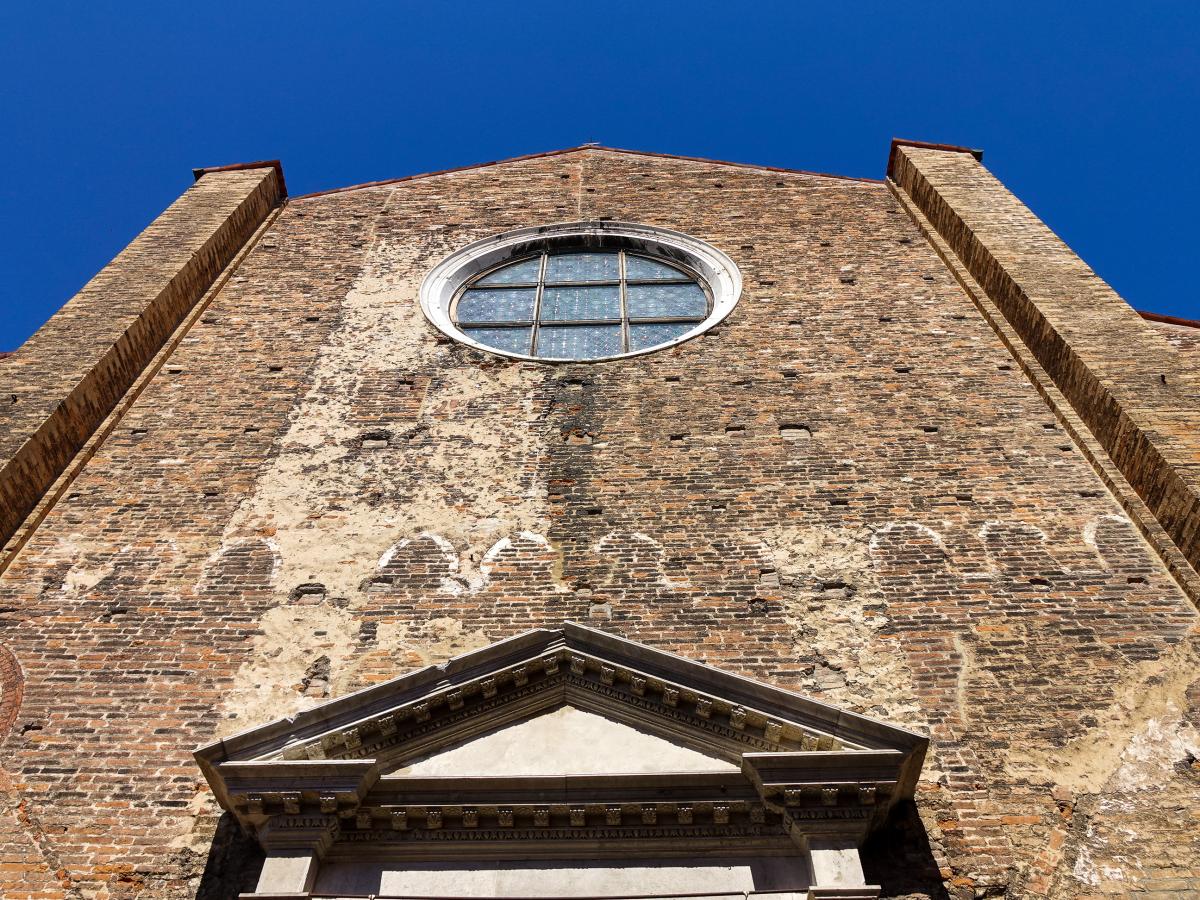
Church of San Pietro Martire
ph. Gabriele Vattolo - Comune di Venezia
Stage 3: From Fondamenta dei Vetrai to the Murano Glass Museum
Back to the Lino Toffolo Bridge (Ponte Longo), crossing the main canal, the opposite bank Riva Longa is disseminated with stores and workshops here and there intermingled by trattorias and by the “Conterie” (Glass beads factory) complex now the Hyatt Centric hotel.
The sequence of shops continues beyond Punta Conterie, along the Fondamenta Marco Giustinian where the elegant façade of Palazzo Giustinian (17th cent.) overlooks the canal.
Since 1861 it hosts the Glass Museum founded by abbot Zanetti as a demonstration of the variety and constant evolution of the different glass working techniques. Across the canal stands the beautiful Renaissance façade of Palazzo Trevisan (1557). Visit to the Glass Museum where works executed with different artistic techniques are displayed (45 minutes).
The visit inside the Glass Museum of Murano follows a precise chronology and starts with the artefacts from the northern Dalmatian necropolis dating back to the Roman Era (1st/4th centuries), mainly from cinerary urns and glass objects from the graves goods. Particularly relevant, also in relation to the itinerary’s topic, are the moulded glass plates and bowls subsequently grinded and engraved. The museum presents artefacts of extraordinary value showing the development of the Venetian art glass from the 14th to the 17th century.
The genuine leap in quality took place in the 15th century thanks to Angelo Barovier’s (1405-1460) invention of crystal glass. For the very first time in its history, the glass produced in the Murano furnaces appeared as clear and transparent as rock crystal. The most famous and valuable item of the whole museum collection, the Barovier’s Bowl, a blue nuptial goblet decorated with enamels depicting the typical subjects of the Renaissance iconography, while in the later 17th century the highest levels of virtuosity in the glass decoration are achieved with the so called “a mano volante” (free hand) drawing technique, engraving glass with a diamond point pencil. (45 minutes).
The visit of the Glass Museum will offer the opportunity to trace back the history of glass and its processing. According to Pliny the Elder’s Naturalis Historia, glassmaking dates back at least to 5,000 years ago, born in the Mesopotamia of mid-third Millennium B.C. in the form of vitreous beads (the same technique was also employed in the Middle Kingdom Egypt). Glass was current in Greece and used for perfumes and beauty ointments transport and trade. Glassmaking was developed across the whole Roman Empire and from the first half of the 1st century B.C. the technique of blowing glass with the use of an iron rod to produce vases and bottles became regular in Rome from where the hyalurgy (the technique of glass processing) moved then to Byzantium and, from that period on, even on the nearby island of Torcello, where glass objects dating back to the 5th-6th century were found.
As early as 1271 the Statute known as Venetian Chapter was issued to protect Venetian glass by preventing it from being imported from abroad and denying foreigners to operate in Venice, while in 1291 the Doge’s edict transferred the furnaces for glass processing from Venice to the island of Murano. Subsequently, Muranese workers exported their knowledge to various areas of continental Europe, thus spreading the glass industry considered a primary expression of luxury (mirrors, glasses and chandeliers) that has always been reserved for a select public such as sovereigns and nobility ever since.
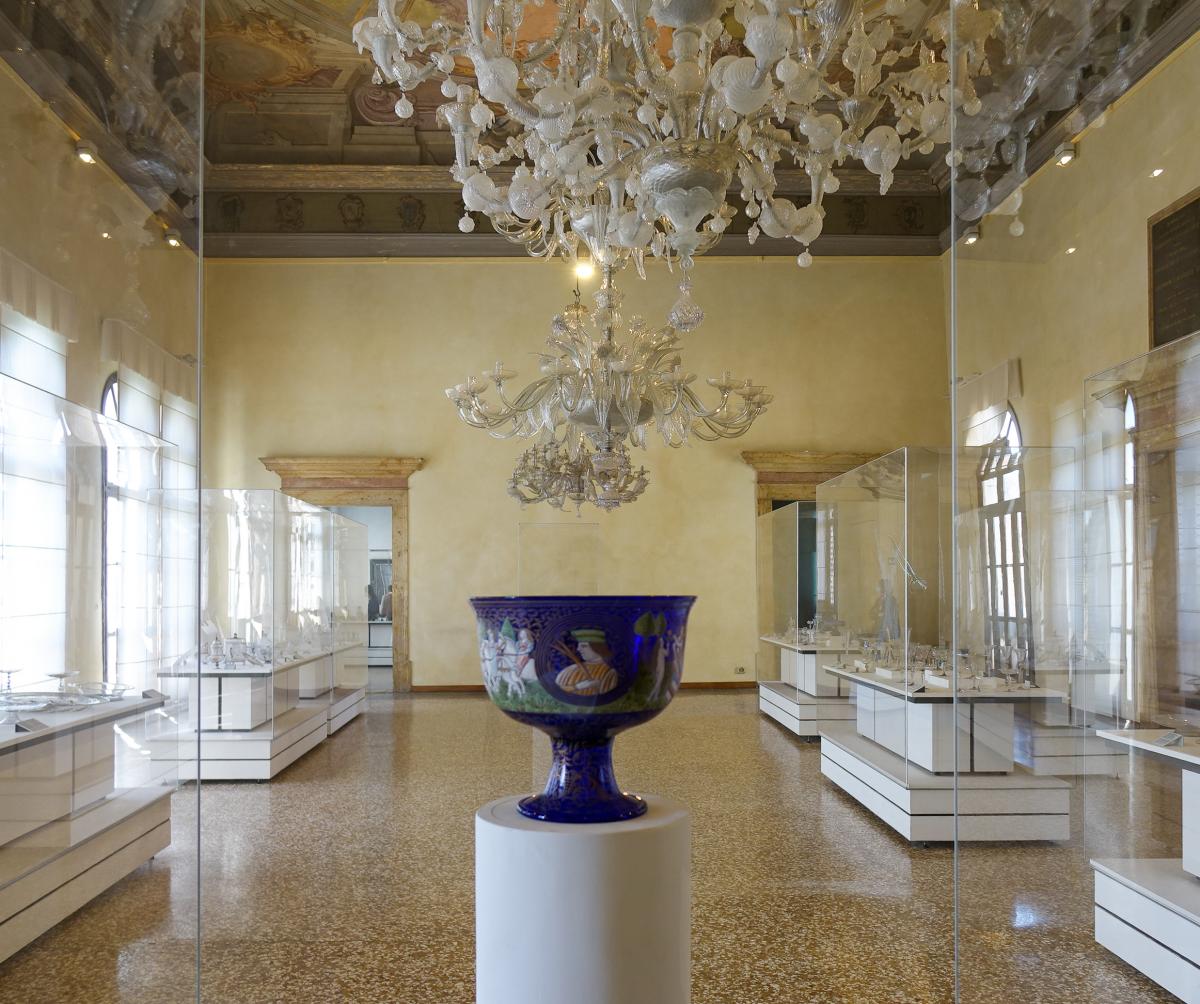
Murano Glass Museum
ph. Gabriele Vattolo - Comune di Venezia
Stage 4: From Fondamenta Giustinian to Santa Maria e Donato Basilica
In San Donato square, besides Santa Maria e Donato Basilica (12th cent.), at the foot of the Tower, is the War Memorial, a noteworthy work by the sculptor Napoleone Martinuzzi.
Visit to Santa Maria e Donato Basilica where the Stations of the Cross by Marco Toso Borella are exhibited (45 minutes).
Founded in ancient times (7th century), the Basilica was erected in the present form by the beginning of the 12th century and completed in the year 1140.
The interior plan is in the form of a Latin cross divided into three naves. Of considerable value is the stone mosaic floor with animals and geometric decoration. In the apse basin the image of the Virgin Mary as the mother of God is made with goldleaf glass mosaics. Along the walls, valuable works of art by the masters of Medieval Venetian painting (Paolo Veneziano, Lorenzo Veneziano) can be admired, while in the nearby Baptistery, the Acilii (a plebeian family at ancient Rome) antique sarcophagus that served as a baptismal font can still be admired. (45 minutes).
From the apse of the former cathedral of Santa Maria e Donato, proceeding to the left along the Fondamenta San Lorenzo you get to Ponte Terese, beyond which begins Calle del Convento where, at number 12/14, the laboratory of artistic glass of Maestro Lorenzo Ferro can also be found. Although producing his works on the island of Murano with the traditional techniques, the artist expressed his preference for people to visit the showroom located in Venice - San Polo, Calle seconda dei Saoneri 2672 A/B - Phone/fax n° (+39) 0418392867 - www.vetromuranoarte.com - e-mail: info@ferrolorenzomurano.com where is possible to admire the fully handmade bas-reliefs in glass inspired by Venetian symbols merging both art and crafts.
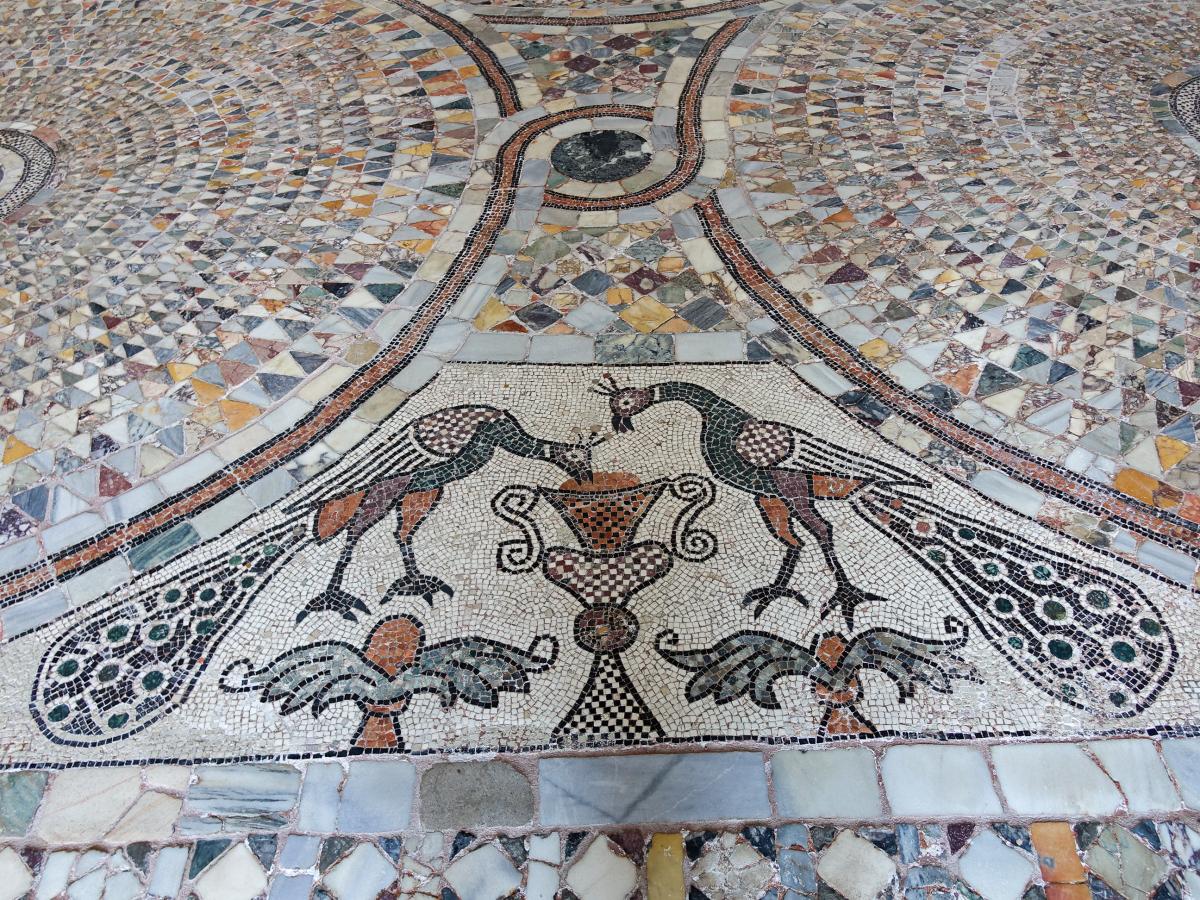
Basilica Santi Maria e Donato
ph. Gabriele Vattolo - Comune di Venezia



